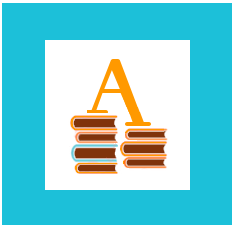Costa Rica is a very small country, where two of its most valuable traits are its natural beauty and its warm people. Our tropical climate allows outdoor activities, so our children are constantly in contact with Nature, which is a very important part of our lives.
Traditional storytelling is simple and usually has a very special sense of humour. There are other identifiable traits/influences:
--Spanish heritage: Like most Latin American countries, Costa Rica’s identity has a strong Spanish influence due to the colonial era. Spain is the origin of the rhymes we sing as children and many of our bedtime stories.
--Pre-Colombian heritage: All of our indigenous ethnic groups (Guaymí, Guatuso, Bribrí, Cabecar, Boruca, Chorotega, Teribe and Maleku) practice oral tradition, so telling stories is an essential part of their everyday living. An example of this nfluence in children's literature is the book, Mo, written in 1992 by Lara Ríos and illustrated by Vicky Ramos.
--Costumbrismo: An artistic and literary movement which intended to portray and preserve our local social customs. Many stories were humorous tall tales, such as Historias de Tatamudo (Stories of Tatamudo), written in 1955 by Fabián Dobles.
--Afro-Caribbean heritage: This is a cultural influence that has enriched the Caribbean area. Music and the musicality of words have a central role, as it does in the book Cocorí, written in 1947 by Joaquín Gutiérrez.
 --Personification of animals. Our stories are filled with animals with human traits: generosity, mischief, wisdom, innocence, greed, courage. Some of our classical characters are “Tío Conejo” (Uncle Rabbit) and “Tío Coyote” (Uncle Coyote), from Cuentos de mi Tía Panchita (Stories of my Aunt Panchita), a book written in 1920 by Carmen Lyra and illustrated by artists such as Juan Manuel Sánchez and Hugo Díaz.
--Personification of animals. Our stories are filled with animals with human traits: generosity, mischief, wisdom, innocence, greed, courage. Some of our classical characters are “Tío Conejo” (Uncle Rabbit) and “Tío Coyote” (Uncle Coyote), from Cuentos de mi Tía Panchita (Stories of my Aunt Panchita), a book written in 1920 by Carmen Lyra and illustrated by artists such as Juan Manuel Sánchez and Hugo Díaz.Costa Rica has a strong publicly-funded school system which guarantees free education for all (primary school attendance is 92%). Children are taught at schools all over the country and many towns have a public library with a children’s literature area, where good reading habits are encouraged through activities such as workshops and story time.
However, Costa Rica is not a rich country and its children’s books market is tiny, so opportunities to publish are limited. Most publishers are concerned about sales, hence have a very conservative approach to the story and illustration style, which leaves little room for creative freedom. There are two main public publishers (Editorial Costa Rica and EUCR) which publish a few children’s books per year, but almost no private publishers are interested in publishing children’s books. Children’s books created by Costa Ricans are usually printed with the writer/illustrator’s own resources, so they are few and far between, and it is also very difficult to get them placed in bookstores.
 On the other hand, the impact caused by the mass distribution of books coming from bigger and stronger international publishers is implacable. The children’s books sections in our bookstores are flooded with imported books and characters, some of which children see repeatedly in movies and television, but which do not have much to do with their real lives and experiences. Local books are left with little room for readers to find them, so there are fewer alternatives to what is made so easily available by the global mass market.
On the other hand, the impact caused by the mass distribution of books coming from bigger and stronger international publishers is implacable. The children’s books sections in our bookstores are flooded with imported books and characters, some of which children see repeatedly in movies and television, but which do not have much to do with their real lives and experiences. Local books are left with little room for readers to find them, so there are fewer alternatives to what is made so easily available by the global mass market.Still, I do not believe children’s books created by local authors and artists will disappear. There is an urgent and real need for fresh ideas and stories that resonate with our children. Little by little, this need is being met by projects carried out by the writers and illustrators themselves, and by groups such as GAMA, an association of Costa Rican illustrators. These people continue to encourage each other, by writing, drawing and painting stories, simply for the love of creating books of great quality for Costa Rican children.
-
About the Author...
Wen Hsu was born to Chinese parents in Taiwan but has lived in Costa Rica since she was two years old. She is the illustrator of several children’s books including Salina by Marianela Ortuño Pinto, Sebastian by Michael Stewart, Historia de un Árbol (History of a Tree) by Ricardo Cie, and For the Love of a Cat, a Buddhist story which she illustrated for Katha, a “profit for all” organization impacting social injustice and economic poverty in urban India. She has received honors for her work as an illustrator, including the Adobe Scholarship for Excellence in Illustration and the 2008 Grand Prize in the prestigious Noma Concours for Picture Book Illustration contest organized by Asia/Pacific Cultural Centre for UNESCO (ACCU) for her own book, Nadi & Xiao Lan. Hsu makes her home in Turrialba, Costa Rica.















0 comments:
Post a Comment